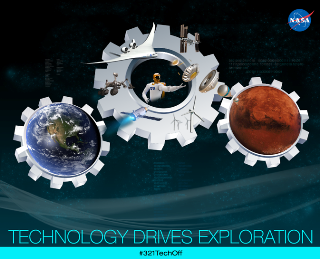Apr 8 2015
In an attempt to design and fabricate ultra-lightweight (ULW) materials for aircraft structures and vehicles, NASA has chosen three proposals that enable 40% weight reduction of spacecraft used for deep space exploration applications.

Composite sandwich structures are unique materials formed by combining a lightweight core with two thin skins. Foam or honeycomb cores are usually incorporated in conventional composite sandwich structures. Such composites are widely used in the aerospace industry and applications that support the future Mars missions. The ULW materials are different from traditional cores and are likely to reduce the mass of aircraft by a significant percentage.
The solicitation awards for Phase 1 amounts up to $550,000, a fund given to awardees for 13 months to develop ULW core panels of 12’x12’x1”. The technologies that proceed to Phase II will describe the process of scaling the panel up to 2’x2’x1”, producing 10’x11’x1” ULW core panels. In addition, NASA provides up to $2 million per award for a maximum of 18 months.
Lightweight and multifunctional materials and structures are one of NASA's top focus areas capable of having the greatest impact on future NASA missions in human and robotic exploration.
These advanced technologies are necessary for us to be able to launch stronger, yet lighter, spacecraft and components as we look to explore an asteroid and eventually Mars.
Steve Jurczyk
Associate Administrator for NASA's Space Technology Mission Directorate, Washington
The following are the awards chosen for contract negotiations:
- Ultralight Micro-truss Cores for Space Launch Systems from HRL Laboratories LLC of Malibu, California
- Game Changing Technology Development Program Ultra-Light Weight Core Materials for Efficient Load Bearing Composite Sandwich Structures from ATK Space Systems LLC of Magna, Utah
- Ultra-Lightweight Core Materials for Efficient Load-Bearing Composite Sandwich Structures from Dynetics Inc. of Huntsville, Alabama
The proposals were received from different places including NASA centers, industry and universities. The Game Changing Development Program for STMD is managed by NASA's Langley Research Center in Hampton, Virginia.